I saw the reports on the Brisbane birding Facebook group on Monday morning. A handful of endangered swift parrots had turned up near Toowoomba, spotted by a keen-eyed birder in a park on the city’s eastern edge. They were a three-hour drive away; just far enough to make chasing the rarity difficult.
If only I hadn’t just returned from a two-week road trip, with birds galore and several long days behind the wheel. If only my inbox weren’t a horror show of post-vacation tasks. If only my meeting schedule weren’t packed, if there weren’t groceries to buy, laundry to fold, and a lawn to mow. Next time, I said to myself.
But something kept nagging at the corners of my mind all week, as I worked through emails and to-do lists, folded clothes and got the weeding under control. The parrots stayed put, and each glance at Facebook showed elated posts from birders accompanied by photos of colorful parrots scarfing down flowers high in the eucalypts.
Biodiversity 101
What you need to know about the variety of life on Earth and how to protect it
I’d just seen a dozen new species on my recent holiday, including two endangered parrots. Was my unease a manifestation of the post-vacation malaise; a longing to be back under open skies with nothing to do but bird? No. This was something else.
It wasn’t until Thursday evening that I put my finger on the source of my angst. This wasn’t a usual rarity chase, where a species appears out of range. The bird at the center of the buzz — the swift parrot — is one of the rarest and most emperiled birds in Australia.
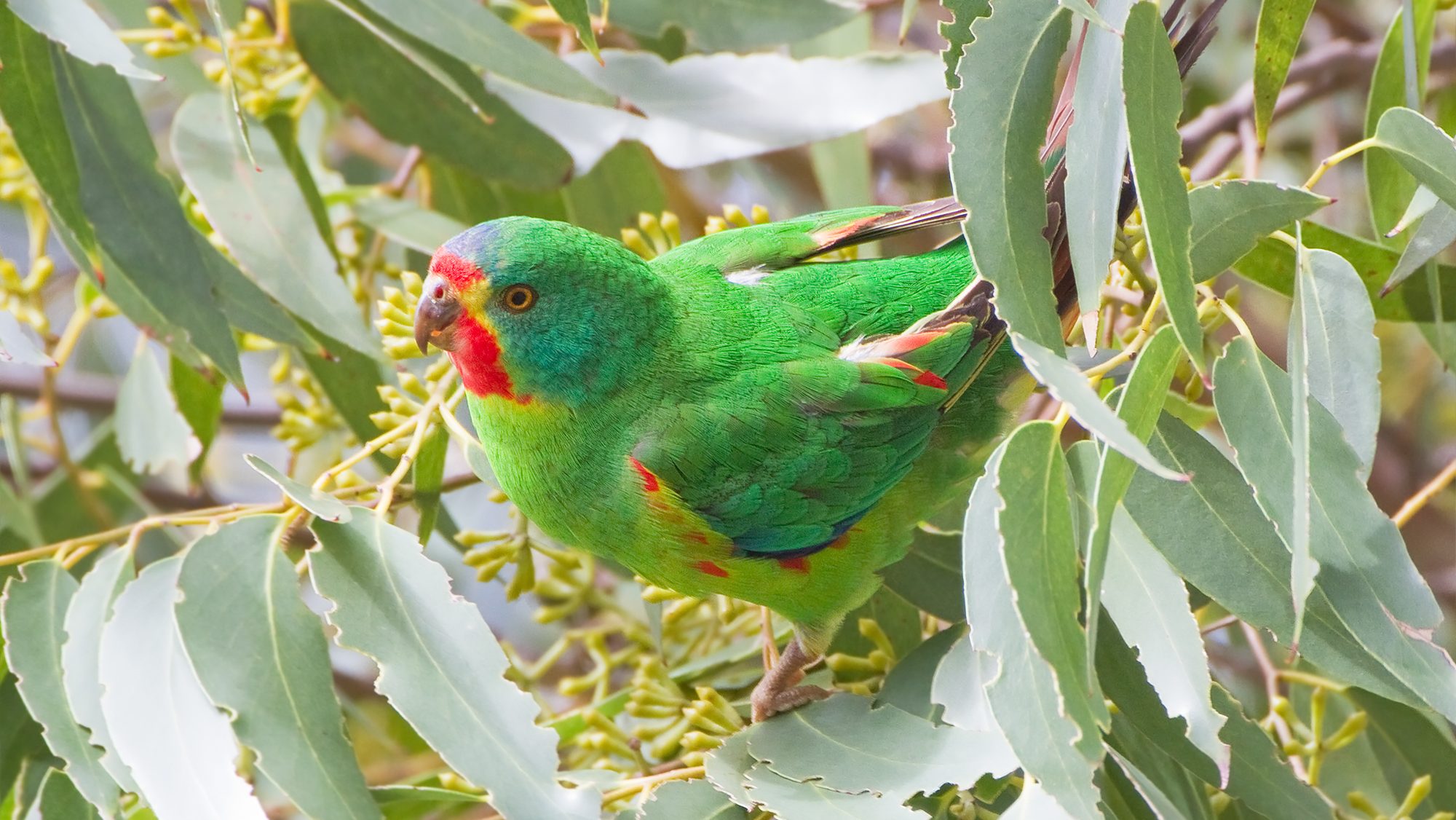
Leprechaun green with a red-smudged face and a blue cap, swift parrots are one of only two migratory parrots in the world. They breed each summer in the forests of eastern Tasmania and then fly hundreds of miles across to the mainland to forage on flowering eucalyptus trees in winter.
Seeing them is often a matter of luck; the birds are nomadic, following the blooms and often stopping for just days or even hours at a time, before moving on in search of nectar. Some years they travel as far as south-east Queensland, a journey that ranks as the world’s longest-known parrot migration.
All is not well for swift parrots. Tasmania is rich in timber resources, and the state’s logging industry has caused significant habitat loss. Nearly a quarter of Tasmania’s southern old-growth forests were logged between 1996 and 2016, much of that swift parrot habitat. The birds nest in the hollows of old-growth trees and prefer to breed in the same areas each year. Once a forest is lost, the birds struggle to adjust. Swift parrots are now considered critically endangered, with only an estimated 500 birds left in the wild.
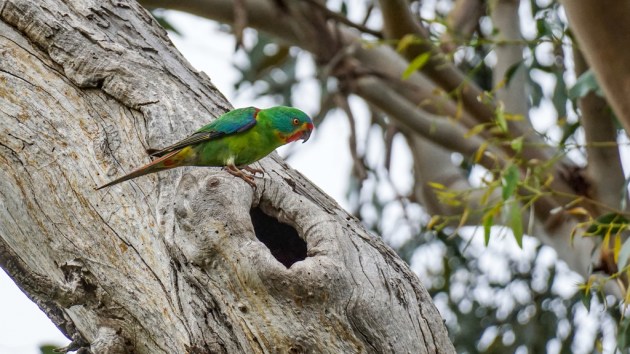
The next morning, I slip out of the house before dawn. As I back out of the driveway I dial into a conference call with my co-workers back in the United States, apologizing that I’ll have to take the call from behind the wheel. My route winds through back roads, down the western slope of the Blackall Range before turning south to Toowoomba. It’s a scenic drive through quiet country towns and cow paddocks, and it allows me time to think.
I’m not one of those birders who obsessively chases rarities to pad their life list. I like both rarities and lists, but each on their own terms. Finding difficult or unexpected birds is part of the joy of birding, and keeping lists appeals to my writerly and collecting tendencies. But birding for the sake of the list just feels wrong.
I’m also skeptical of the human tendency to ascribe inflated value to something simply because it’s rare or difficult to obtain. In that sense, some hard-to-find birds (endangered or otherwise) are no different than baseball cards or designer handbags.
So why, exactly, am I driving six hours round trip on a work day to see this parrot? Because I’m afraid that if I don’t make the effort to see this species now, I might never get the chance. Logging of swift parrot habitat in Tasmania continues to this day, and researchers fear that the species could slip into extinction as early as 2031, a mere seven years away.
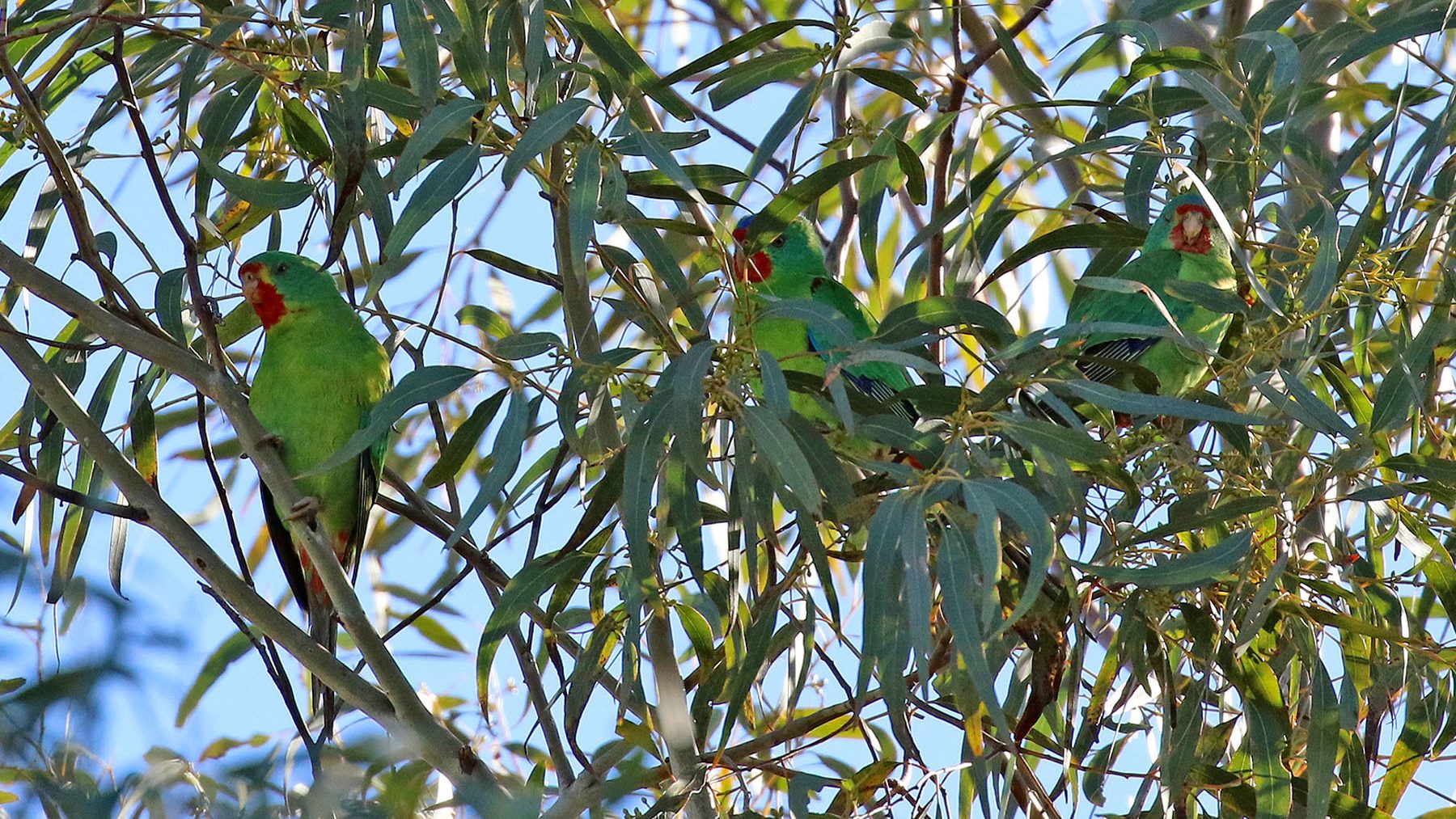
I think about extinction often. It’s hard not to, working in conservation and spending my free time chasing wildlife in an ever-changing world. Many species have already gone extinct within my lifetime: the Western black rhino, the Hawaiian black-faced honeycreeper, or the Bramble Cay melomys, to name a few. But these were not species that I knew and loved. They were out there, on the plains of Africa, in the cloud forests of Hawaii, or the coral-strewn atolls of the Pacific. And while I read of their loss with sadness, it wasn’t personal.
But one day it will be personal. All too soon — and almost certainly more than once — I will witness the loss of an animal that I have seen. An animal that I’ve marveled at through binoculars, watched forage in the treetops, or snuffle through the undergrowth. A species I’ve perhaps traveled to see in its sunset years.
A seed of guilt grows in my stomach as I drive. Is it wrong to seek out a species because I fear its extinction? Is this macabre mission a form of extinction tourism, capitalism’s hellish answer to the biodiversity crisis?
It’s a sentiment not unique to my swift parrot chase. I want to float over the Great Barrier Reef before it’s bleached beyond recognition. I should probably visit Glacier National Park while there are still glaciers. Or watch polar bears predate seal on healthy ice flows. I want to see what’s left of the world I knew, before the Anthropocene warps it beyond recognition.
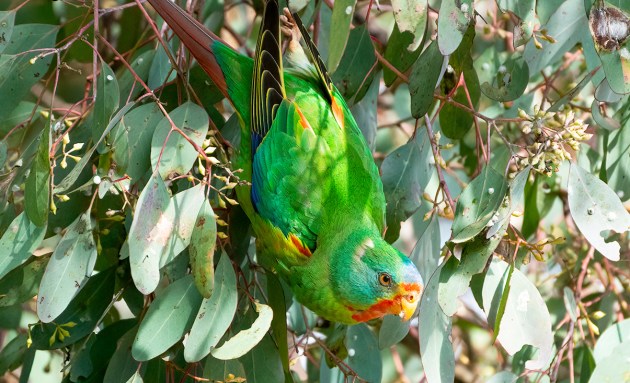
I can tell the birds are still here as I pull into the parking lot. A small crowd of birders, cameras in tow, gaze intently into trees a short distance away. I breathe a sigh of relief, grab my binoculars, and speed-walk over to join them.
We exchange nods and smiles, and then I scan the treetops, looking for bunches of snow-white flowers waving in the wind. Rainbow lorikeets — larger and more colorful than swifties — screech garrulously around us, sending little jolts of adrenaline coursing through my body with each case of mistaken identity. I fix my sights on a a particularly dense bunch of flowers, and before long I see a swift parrot crawl out from the cluster, hanging upside down to gnash flowers in its beak.
My breath catches in my throat, as it does each time I see a new bird.
Half a dozen cameras click around me, each hoping the wind cooperates for a sharp, focused photo. After a few seconds, the parrot disappears from view. Cameras and binoculars down, we all smile at one another. This too is what I love about birding: the quiet moments of shared joy with strangers. We won’t exchange names or phone numbers, or even much conversation beyond where the bird has gone in the tree. But we’re all here, watching this gorgeous little jewel of a bird gorge on flowers.
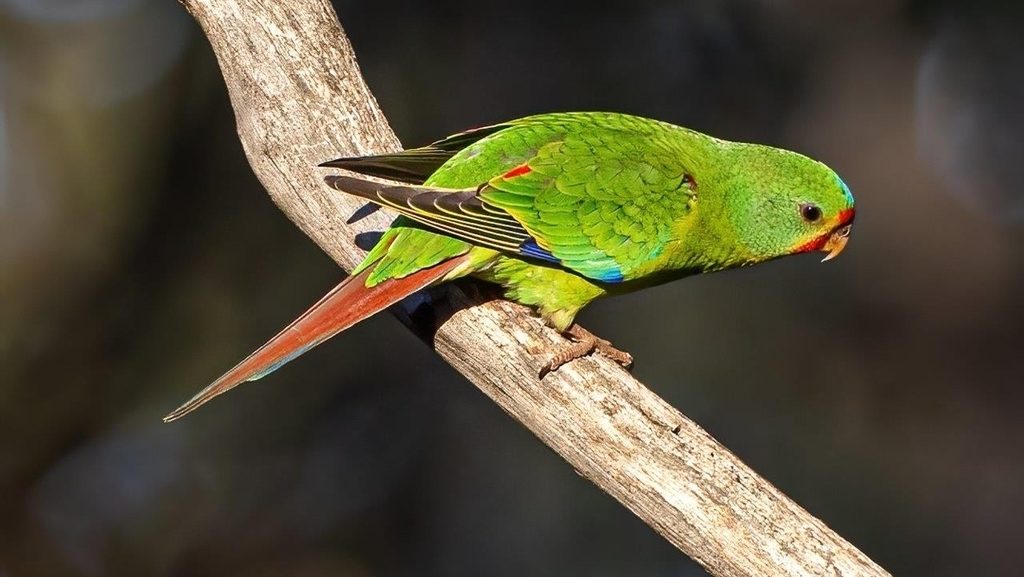
I spent the next hour watching the parrots — there are four of them hidden high in the canopy — clamber to and fro. Eventually, they flush, flying to a taller tree a few meters away. It’s time to go; I have an afternoon meeting and an inbox of messages waiting.
I get back in the car, utterly content. The nagging anxiety I had about this chase is gone. We conservationists bear witness to so much loss: of species, ecosystems, and the places we know and love. Often, it feels like we’re watching extinction in real time, powerless to stop it.
But there is value in staring these losses in the face. Value in bearing witness to a rare parrot with an uncertain future, knowing full well I might mourn its extinction in a few years time. If the worst happens, at least I will have cherished it while it was here. And while there are still others who watch and love and try to save these birds, I’ll have hope.
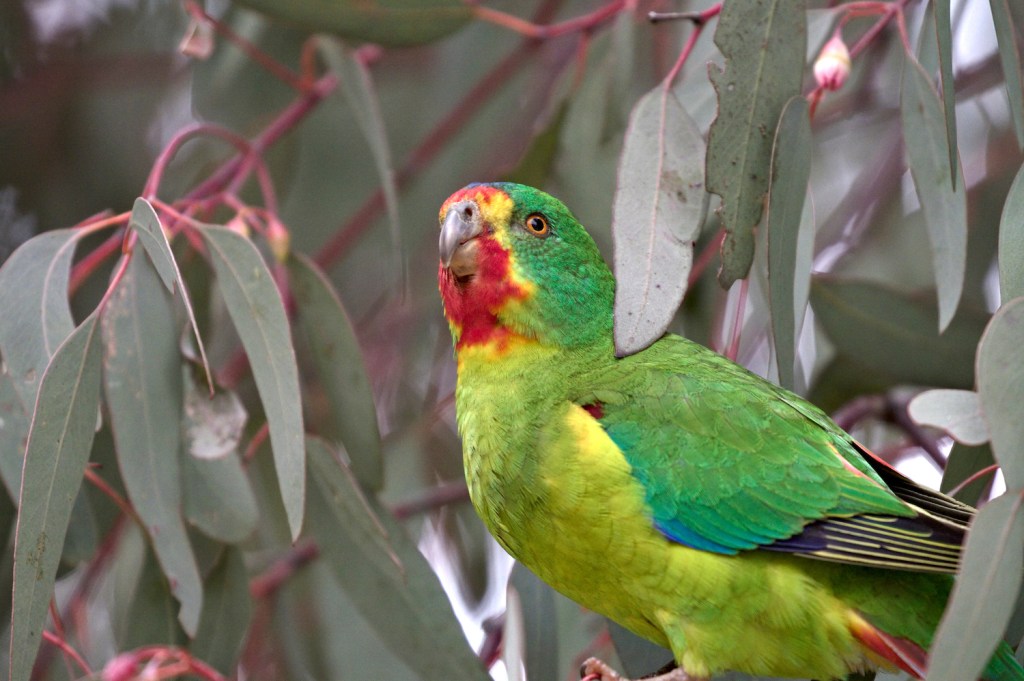



There are 3 parrot species that migrate from Tasmania to the mainland. Orange Bellied Parrots and Blue Winged Parrots also make this trip. Probably a behaviour from when Tasmania was still connected to the mainland, before sea levels rose about 12,000 years ago.